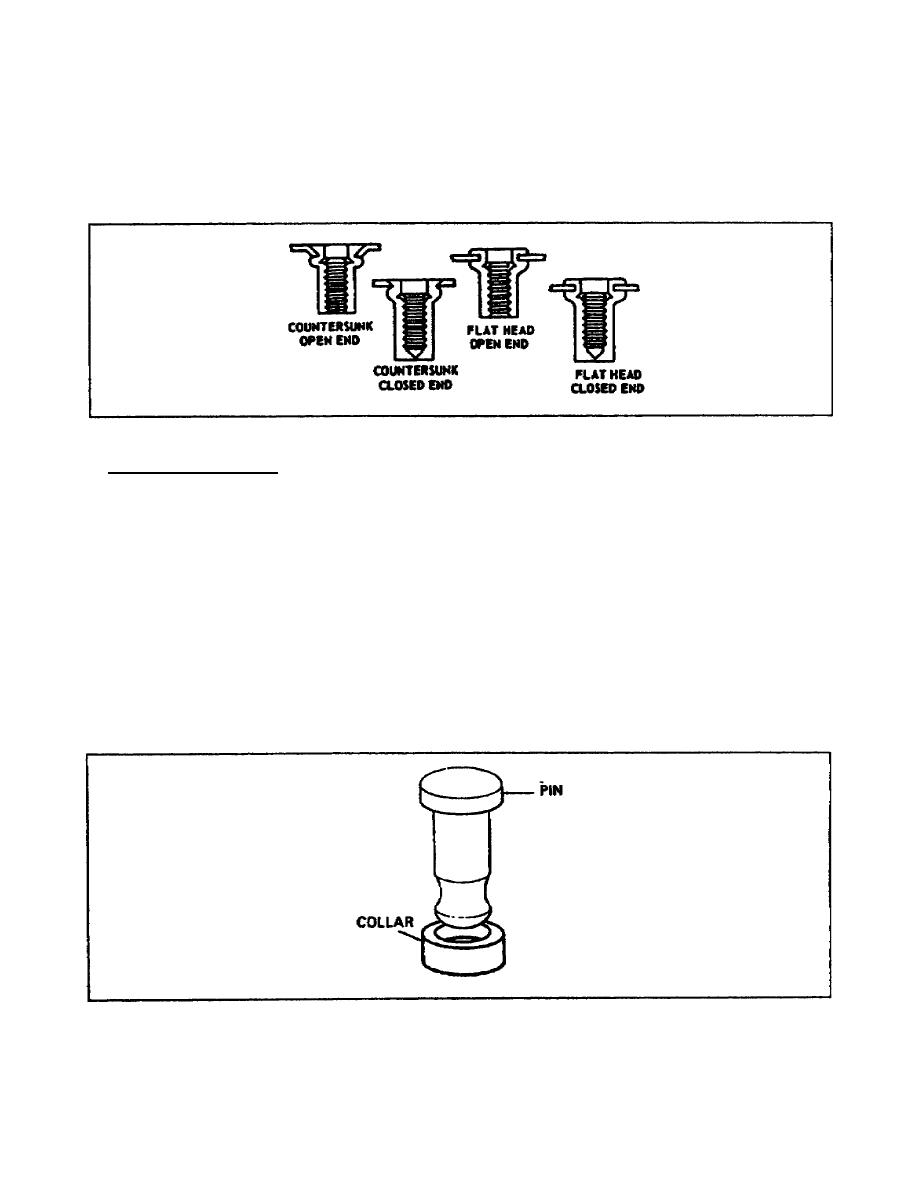
plate, and rivnuts without keys are used for blind riveting where
torque loads are not imposed.
Closed-end rivnuts are used when a
sealed installation is required. The installation of a rivnut is not
complete unless it is plugged, either with one of the plugs designed
for that purpose or with a screw. A rivnut does not develop its full
strength when left hollow.
Figure 1-13.
Countersunk and Flat Head Rivnuts.
Hi-Shear Rivets.
The Hi-Shear rivet, essentially a threadless
bolt, consists of two parts, the pin and the collar as shown in
Figure 1-14. These rivets are classified as special rivets, but are
not of the blind type.
Access to both sides of the material is
required to install the rivet.
Hi-Shear rivets have the same shear
strength as bolts of equal diameters and have about 40 percent of the
weight of a bolt. In addition, they require only about one-fifth as
much time to install as a bolt, washer, and nut combination.
They
are approximately three times as strong as solid shank rivets.
The
pin is headed at one end and is grooved about the circumference at
the other. The collar is swaged onto the grooved end to make a firm,
tight fit. Hi-Shear rivets are made from a variety of materials and
are used only in shear applications.
In addition, they must not be
used where the grip length is less than the shank diameter.
Figure 1-14.
Hi-Shear Pin.
34
AL0992



 Previous Page
Previous Page
